How to Choose Living Room Accent Wall in 2025
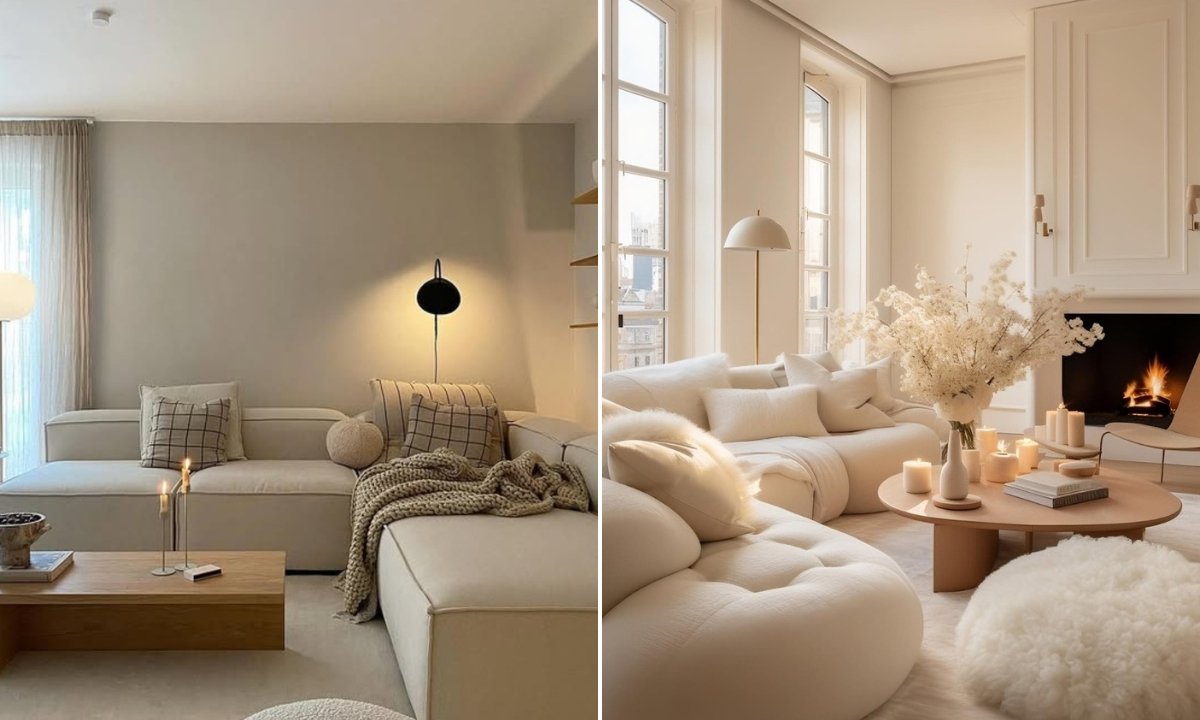
You’ve probably seen accent walls that look amazing on Pinterest, but when you try it, something feels off.
You paint one wall and suddenly your room feels smaller. You pick a bold color and realize it fights with your furniture.
You step back, and the whole thing looks random, like it doesn’t belong. That is because you need a plan.
When you know how to pick the right wall, choose the right color, and add texture, you turn your living room into a space that feels stylish, balanced, and intentional.
Let’s jump into it!
What Makes Accent Walls Tricky in Living Rooms?
Accent walls look easy in theory, but you know the truth when you try it. If you choose the wrong wall, your whole space feels off.
When you pick a color straight from a paint card without testing, you trap yourself with a shade that looks dull and too harsh.
Light makes it trickier, the color you love in daylight can turn muddy at night. And if you just stop at bold paint, your wall falls flat and outdated.
You need to plan. You need texture, balance, and a clear connection to furniture and decor.
When you take control, your accent wall looks intentional, stylish, and pulled together.
6 Tips for Living Room Accent Walls
1. Choose the Right Wall
You need to start by standing in your doorway and notice where your eyes land first; that’s the wall you should claim.
In most living rooms, you will see it’s the wall with the fireplace, TV, and the largest window.
You can’t pick a wall broken up by doors or weird angles, because you will never get the focus you want.
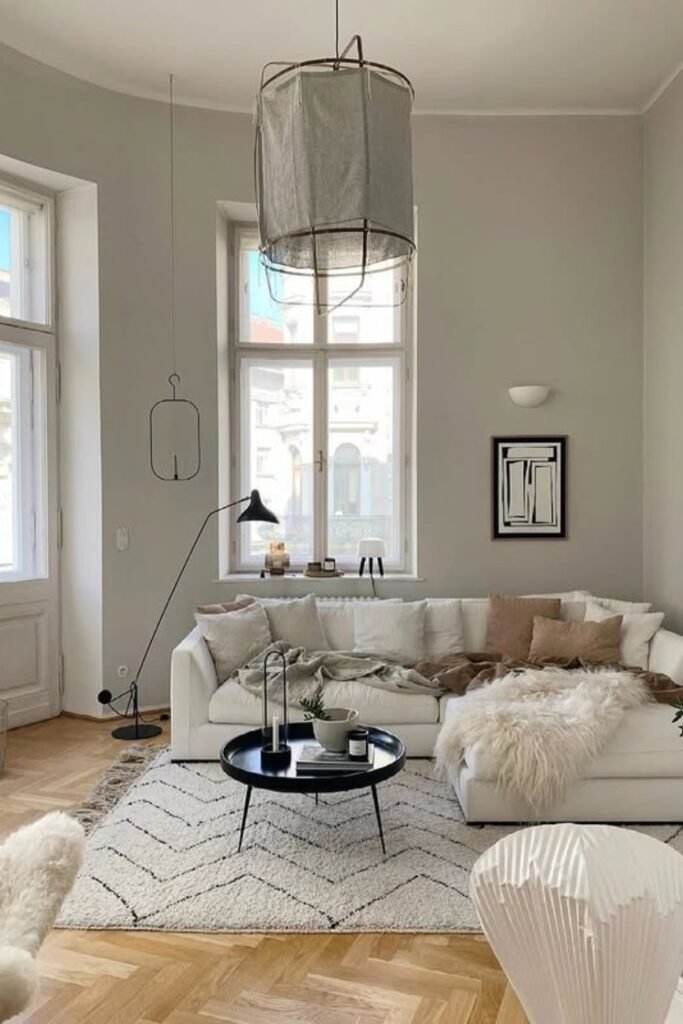
You have to pay attention to light, too. If you choose a wall that catches natural light, your color and texture will pop.
But if you grab a dark corner, you will make the whole room feel small.
You need to think about balance; your accent wall must anchor your space, not fight against your furniture.
When your sofa or main seating faces it, you know you have chosen the right wall.
2. Pick Colors That Work With Light
You can’t just pick a color because it looks pretty on a card, you need to see how it changes with your room’s light.
If your room faces north, you will notice colors turn cooler, so you need warm tones to balance.
If your room faces south, you will see more warmth, so deep or muted shades will work better for you.
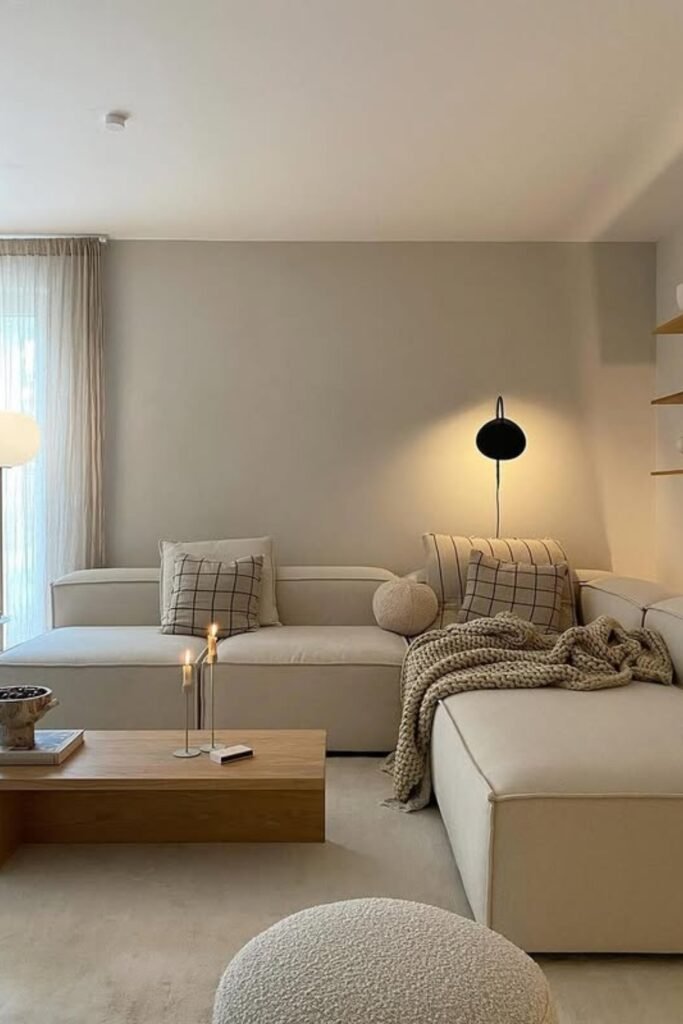
Too high numbers will give you that airy feel, while low numbers will make your room moody and dramatic.
You should always test swatches at different times of day, because daylight and lamps will completely change how the shade looks.
When you choose with light in mind, you’ll never get blindsided by a color that feels wrong once it’s on your wall.
3. Smart Ways to Test Paint and Samples
Don’t let tiny paint chips trick you; they will mislead you every time. You need to paint large swatches on poster boards and move them around your room.
You have to check them in the morning, afternoon, and night, because the same color will shift under different light.
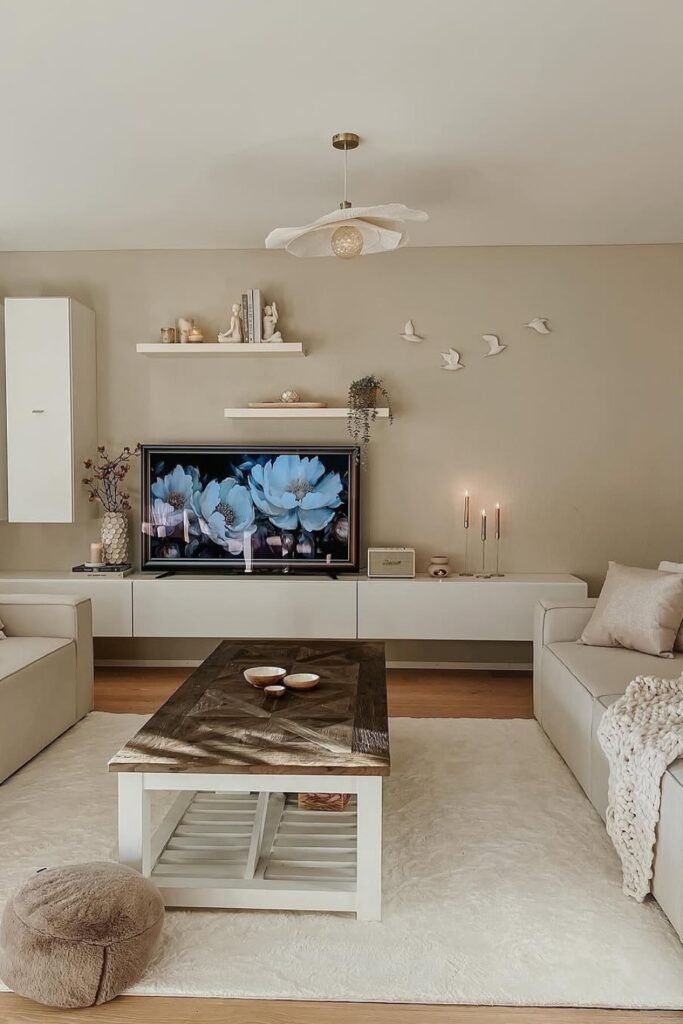
Always give your sample a white border so you can clearly see the undertones. If you don’t want the mess, you can use peel-and-stick samples; they’re clean, removable, and accurate.
When you test this way, you will save yourself from wasting time and money on a color that betrays you once it’s on the wall.
4. Add Texture Instead of Just Paint
A plain painted wall will fall flat in your living room, even if you go bold with color. You need texture to bring depth and interest.
You can try limewash or Roman clay if you want a soft, natural finish, or Venetian plaster if you want something rich and polished.
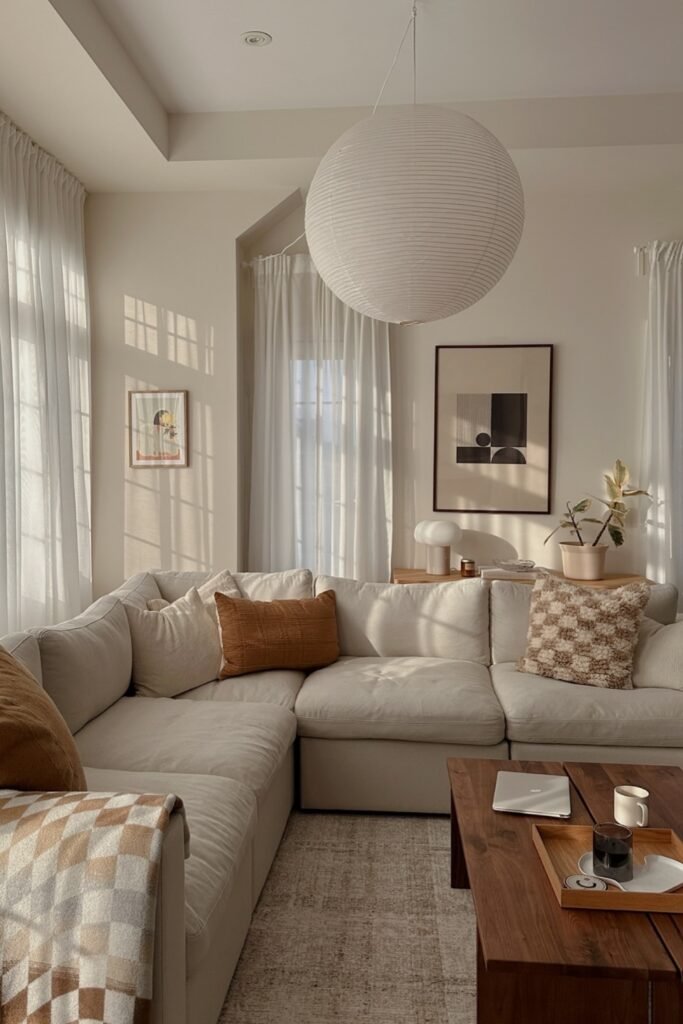
You can add wood slats or acoustic panels to give your room warmth and style while helping with sound.
You can also use shiplap, board-and-batten, or brick veneer, but only if they fit your room’s vibe.
When you bring in texture, you give the wall dimension so it feels designed, not just painted.
5. Tie the Accent Wall Into the Whole Room
An accent wall should feel like it’s a natural part of your room, not just a random feature tacked on.
You need to echo its color in your pillows, rugs, and art so your space looks balanced. If you choose wood, you should repeat that tone in your furniture or decor.
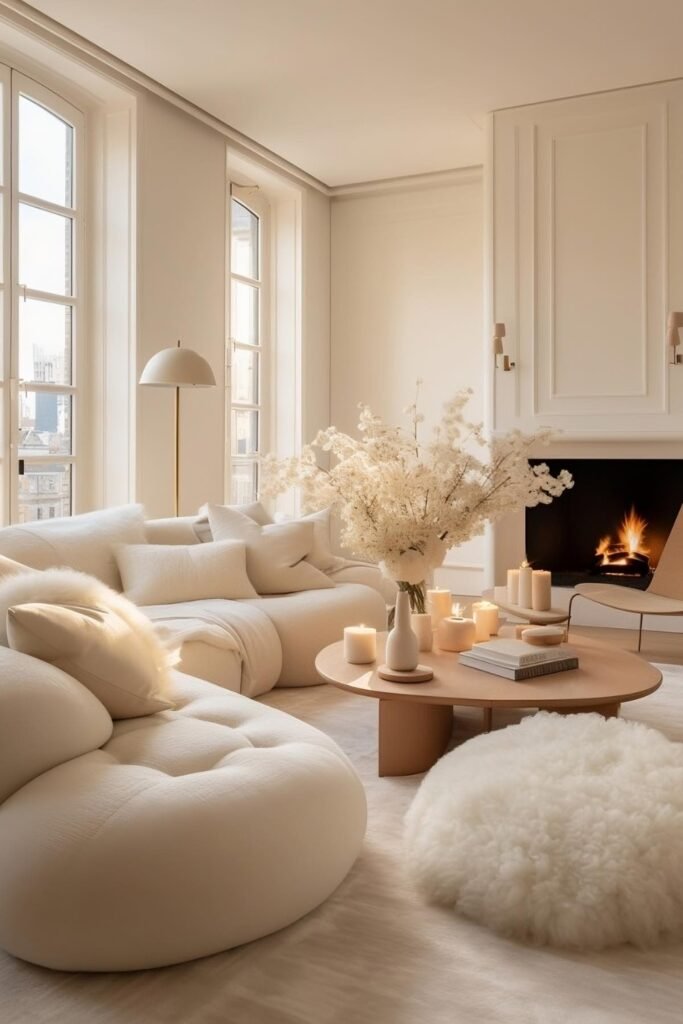
You can’t ignore artwork either; you need to size it right. A good rule is to let art above your sofa cover about two-thirds of the wall space.
You need lighting to work for you; sconces or lamps will highlight your accent wall and tie it to the rest of your room.
6. Fireplace and TV Accent Wall Ideas
If your living room has a fireplace or TV, you already know that wall is your natural focal point.
You can use dark paint behind the TV to reduce glare and help the screen blend in better. You can frame your fireplace with stone, tile, or plaster to give it depth and style.
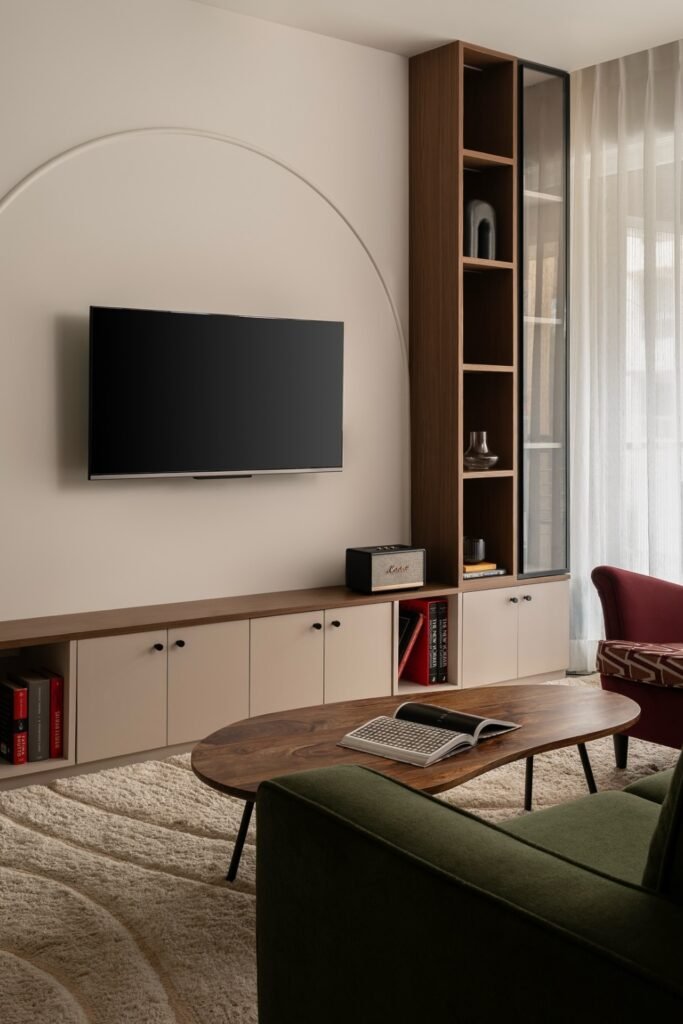
You can even use wood slats or panels to warm up the TV wall. If you have built-ins, you should paint the back panel in a contrasting shade so your shelves pop.
When you treat these functional walls as your accent features, you give your room a polished, intentional look that works for you.
Modern Trends You Can Try in 2025
You don’t have to stop at one bold color anymore, you can take your accent wall much further.
You can use color drenching, where you paint your walls, trim, and even the ceiling the same shade so the whole room feels dramatic and cohesive.
You can play with pattern drenching, layering wallpaper or murals across multiple surfaces so you get depth and movement.
You can choose textured finishes like limewash, plaster, or microcement when you want walls that look rich instead of flat.
You can even bring wallpaper back, using old-world or botanical patterns that make your space feel personal and fresh.
When you experiment this way, you will make your accent wall work for you, turning it into a design statement instead of a random feature.
Conclusion
You can completely change the feel of your living room with an accent wall, but only if you plan it with care.
You need to pick the right wall, the right color, and the right texture. That’s what makes the difference between a design that looks random and one that feels polished.
You should always test your choices in real light and connect the wall to the rest of your room with decor and balance.
FAQs
Should an accent wall be lighter or darker than the other walls?
Most of the time, you’ll find that darker or bolder colors work better for accent walls because this way you can create contrast and draw attention.
You can still use a lighter shade, but only if the rest of your room already feels dark and you need to lift it.
The key is to balance your accent wall should stand out without clashing, so you need to test both lighter and darker options before you decide.
Can a small living room have an accent wall?
Yes, you can use a dark or bold wall, but you have to be careful. If you pick the wrong wall in a small space, you’ll make it feel even smaller.
Choose the wall you face most often, like behind your sofa or around your TV.
Stick to rich shades that don’t overpower you, and bring in texture like wood or plaster instead of heavy color.
When you plan it right, you make your room feel designed, not cramped.
You may also like to read!
